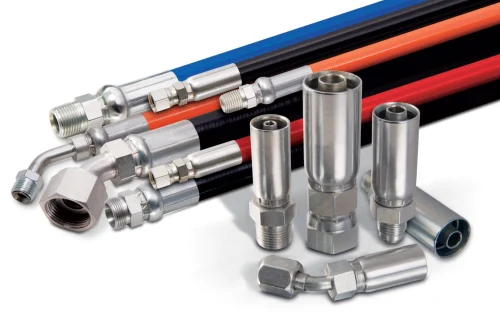thermoplastic hose assemblies

Thermoplastic hose assemblies are flexible conduits used for fluid or gas transfer, constructed from thermoplastic materials and designed to handle specific pressure and temperature ranges. They typically consist of an inner tube, reinforcement layers, and an outer cover, all made from different thermoplastic compounds.
They are widely used in various hydraulic systems for industrial machinery, construction equipment, and other applications.
Fuel and Oil Lines: They are used in the automotive, marine, and aviation industries for fuel and oil transfer.
General Industrial Applications: They find use in a wide range of general industrial applications for water transfer, compressed air lines, and more.
Key Features:
Inner Tube: | This is the layer that comes into direct contact with the fluid being transferred. Common materials include polyether or polyamide. |
Reinforcement: | Thermoplastic hoses often include one or more layers of braided or spiraled synthetic fibers (like aramid) or steel wire for added strength and pressure resistance. |
Outer Cover: | Typically made of abrasion-resistant polyurethane, this layer protects the inner layers from external damage and environmental factors. |
Durability and Longevity: | They often exhibit good resistance to abrasion, ozone, and UV radiation, leading to a longer service life. |
Good Chemical Resistance: | Thermoplastic materials offer excellent resistance to a wide range of chemicals, solvents, and hydraulic fluids. |
High Pressure and Temperature Capabilities: | Many thermoplastic hoses are designed for high-pressure applications and can withstand elevated temperatures. |
